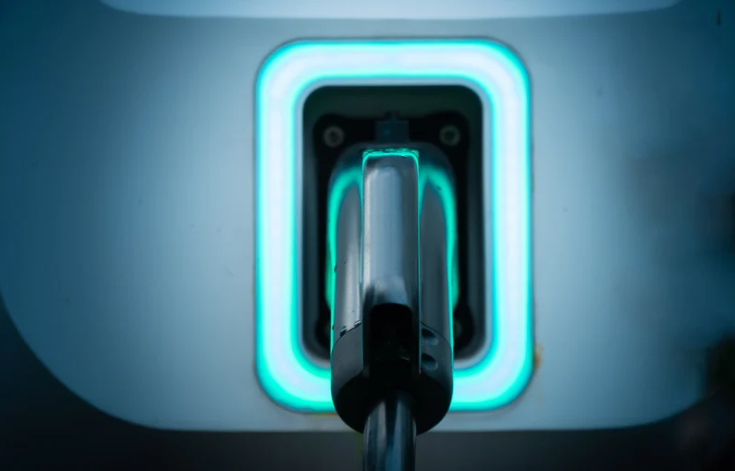
Navigating the Future of Electric HGVs
- Posted by Chadkirk
- On 25th January 2024
A Deep Dive into the Future of Electric HGV’s
The introduction of electric HGV’s is a hot topic in the world of logistics at the moment. Worries about range, price and infrastructure are some of the points being discussed. We’ve taken a deep dive into some of the key talking points surrounding the topic.
A Range Perspective:
The average mileage for Chadkirk Transport’s own 18/26T trucks, which include vehicles as old as 15 plates and new as 73 plates is 989 miles (1600km) on a full tank. For articulated tractor units this rises to 1279.5 (2050km) miles (up to 1759.5 miles/2830km with double tanks). Finally, our 7.5T vehicles are around 528.2 miles (850km).
Let’s place this into a real world scenario to understand the distance a vehicle can cover without needing to stop to refuel using an 18T as a constant. The MPG and tank size of our 18T vehicles allows us to travel from our depot in Stockport to London and back to Stockport twice, plus another trip to London on one tank.
An Electric Comparison:
Disclaimer: It is important to note that maximum range figures of electric vehicles are best case scenario figures, factors such as cold weather, air-conditioning and terrain can impact the range of the batteries. Other factors such as driving style and tyre condition also impact this but these also impact traditional combustion vehicles.
Firstly, let’s look at Volvo’s best option, the Volvo FH Electric. This 44T articulated HGV has a maximum range of 300km. It can hold up to 490kWh of power, and will take 2.5 hours to fully charge with DC (250KW) and 9.5 hours with AC (43KW). Meaning, in one journey from Stockport to London this vehicle would need charging before reaching its destination, we will see why this poses an even bigger problem later in the blog.
Next up, the Mercedes-Benz eActros, with a slightly higher reported range of 205 miles (330km) to 250miles (400km) depending on the spec. Total battery capacity of around 362 kWh and 448 kWh. The batteries can reportedly be charged from 20% to 80% in 30 minutes at a ‘suitable charging station with an output of around one megawatt’ meaning the actual charging times will be similar to the Volvo at the more readily available lower power charging stations. Both battery specs would get a vehicle down to London under perfect conditions, then would need charging.
Finally the DAF CF Electric. The DAF has a reported range of 125 miles (200km), with a battery power of 315kWh and reported charge time of 75 minutes using a DC (250KW) charging station. Meaning whilst it can charge quicker than the counterparts the range will get you from our depot to just past Birmingham before needing to stop to charge.
Clearly, the range of these vehicles is not quite up to scratch in comparison to diesel combustion engine HGV’s. For regular trunking trips for large corporations with the correct charging stations in each depot, the cost savings of fuel and the transition to carbon neutrality the electric powered options currently on the market could be a viable option. For most hauliers, not so much. The story gets worse when we look at the current infrastructure.
HGV Electric Charging Infrastructure:
As of April 2023 the UK did not have a single public charging station for HGV vehicles. With the ban on diesel vehicle production set to come into place in 11 years, this will need to drastically change and quickly. Currently it is almost impossible for most haulage companies to add electric powered HGV’s to their fleet. It is not only more expensive to purchase the vehicle but you get less miles per ‘tank/charge’ than a traditional diesel HGV. You also cannot charge the vehicle out on the road, meaning privately installed charging stations are absolutely necessary. This essentially rules out the majority of UK hauliers bar large national corporations, and even these companies will have limited numbers added to their fleet.
The Future:
Currently the predicted break-even point of electric HGV vehicles in regards to carbon emissions is 68,000km/42,250miles against their diesel counterparts, this considers the mining/shipping of the lithium-ion batteries, bringing a total greenhouse gas saving of around 38%. As the UK’s energy production continues to switch from fossil fuels to renewable energy this number will increase, by 2030 with the further reduced fossil fuel usage the estimates of savings sit at 63%. With 100% energy production to renewables the break even point could be as low as 33,000km/20,500miles and the greenhouse gas reduction increasing to 86%.
Clearly the vision is well intended and is incredibly valuable in reducing the contribution the logistics industry has on emissions. With the proposed targets of the UK government, such as the 2035 diesel vehicle production ban, the infrastructure has to be quickly rolled out and made viable not just to larger corporations with their own charging stations, but also to smaller logistics companies that will require public charging options. Government backed initiatives have been put in place to start supplying a charging network across the UK with GRIDSERVE being employed to provide 200 stations with the project running till 2030. This is likely to be well off the total required infrastructure needed to cope with the 400,000 diesel powered HGVs on UK roads switching to electric.

0 comments on Navigating the Future of Electric HGVs